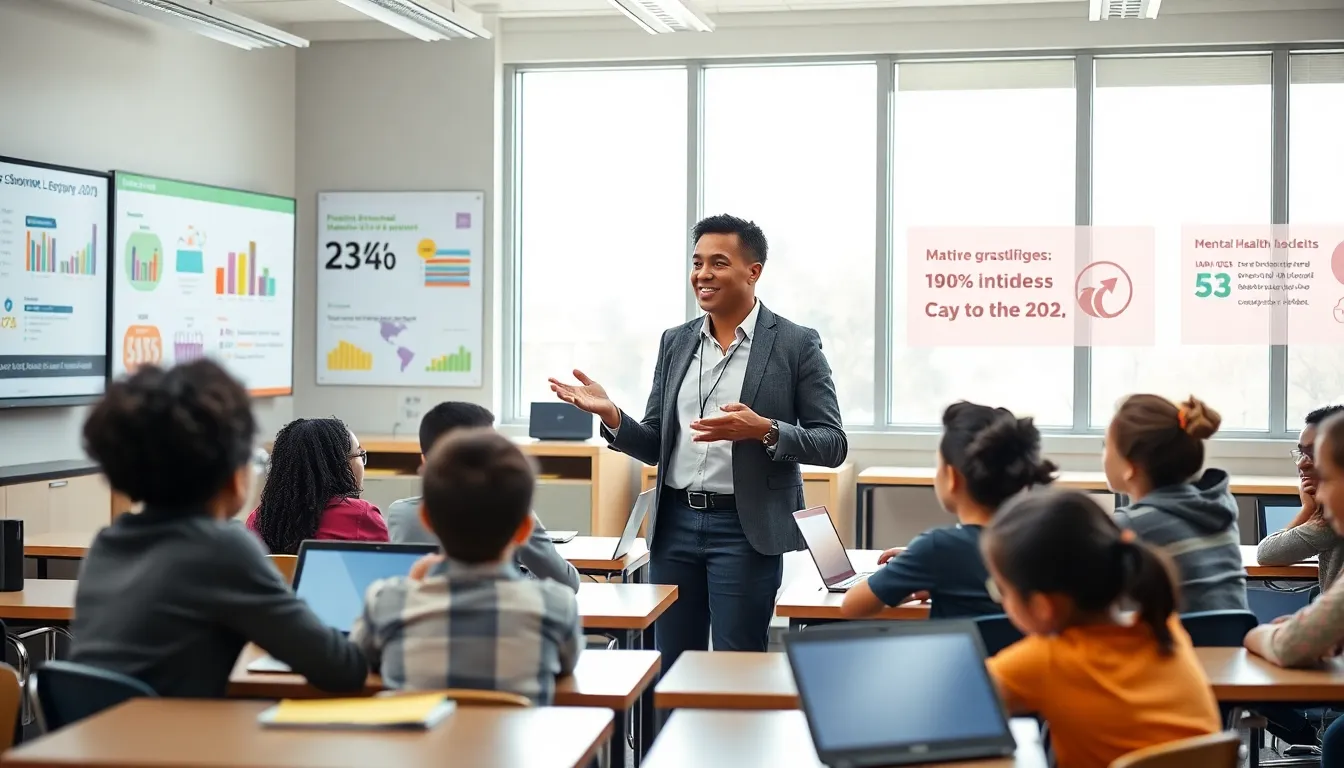Table of Contents
ToggleEducation in today’s world is like a roller coaster: thrilling, unpredictable, and sometimes a bit dizzying. As societal expectations continue to shift, so too does the landscape of education. With funding disparities, the mental well-being of students, and the integration of technology all vying for attention, it’s crucial to understand the landscape. So grab your metaphorical hard hat, because we’re diving into the key issues shaping education today, complete with insights, strategies, and maybe even a chuckle or two along the way.
Funding Disparities in Education

In the world of education, funding disparities can feel like a well-disguised villain. They creep in and create significant divides among schools, affecting everything from resources to teacher salaries.
Impact of Socioeconomic Status on Educational Outcomes
The socioeconomic status of students has a profound impact on their educational experiences. Children from wealthier families often attend well-funded schools, filled with resources, advanced placement classes, and extracurricular activities. In contrast, students from lower-income backgrounds may find themselves in underfunded schools, struggling to access even basic supplies. This gap creates a chasm that often leads to diminished academic achievement and lower graduation rates.
State and Local Funding Models
State and local funding models further exacerbate these disparities. Many states rely heavily on property taxes to fund public education, which means schools in affluent neighborhoods prosper while those in struggling areas suffer. A more equitable funding model is essential for ensuring all students, regardless of where they live, have access to quality education.
The Role of Federal Government in Addressing Funding Gaps
The federal government plays a crucial role in addressing these funding gaps. Programs like Title I aim to allocate additional resources to schools serving low-income students. But, the effectiveness of these programs often falls short due to bureaucratic red tape and inadequate funding allocation. Eventually, for educational equity to truly take hold, federal intervention must be bold and responsive, ensuring that every child receives an equal footing in education.
Technology in Education: Opportunities and Challenges
In recent years, technology in education has become a double-edged sword. It offers incredible opportunities for enhanced learning but also presents significant challenges, primarily the digital divide.
Remote Learning and Digital Divide
The surge of remote learning during the pandemic highlighted the stark reality of access to technology. Many students thrived, engaging in lessons from the comfort of home, while others were left in the dust due to insufficient access to devices or reliable internet. This digital divide has the potential to widen the educational gaps that already exist, making it clear that equitable access to technology must be a priority moving forward.
Integrating Technology in Traditional Classrooms
Integrating technology within traditional classrooms also presents its challenges. Teachers are often expected to seamlessly blend digital tools with conventional methods, all while managing classroom dynamics. Professional development and robust support systems are necessary for educators to successfully navigate this transition and enhance their teaching methodologies.
Student Mental Health and Well-Being
Student mental health has become an increasingly pressing issue in education today. As academic pressures mount and social dynamics evolve, the mental well-being of students is under significant strain.
The Rise of Mental Health Issues Among Students
Reports indicate a dramatic rise in mental health issues among school-aged children. Anxiety, depression, and stress-related disorders are prevalent, complicating educational outcomes. These mental health crises often disrupt learning and can lead to absenteeism, eventually harming long-term academic success.
Strategies for Supporting Student Mental Health
To confront these challenges, schools must adopt comprehensive strategies for supporting student mental health. Implementing programs that promote resilience, creating safe spaces for discussion, and providing access to counseling services can effectively address these issues. It’s crucial that schools work collaboratively with mental health professionals to foster environments where students feel secure and supported.
Curriculum Relevancy and Inclusivity
In our ever-diversifying society, curriculum relevancy and inclusivity are paramount. Educational content should resonate with all students, reflecting their backgrounds and experiences.
Culturally Responsive Teaching Practices
Culturally responsive teaching practices have emerged as a powerful approach to engage students. By incorporating diverse perspectives and materials that reflect students’ lives and communities, educators can foster a more engaging and inclusive learning environment. This not only motivates students but also helps them see themselves in the curriculum, encouraging deeper connections to the material.
Adapting Curriculum for Diverse Learners
This adaptability extends to special education and English language learners. Tailoring curricula to meet the varied needs of all students is essential for maximizing learning potential. By embracing differentiated instruction and universal design for learning, educators can ensure that every student, regardless of their educational challenges, is provided with equitable opportunities to thrive.




